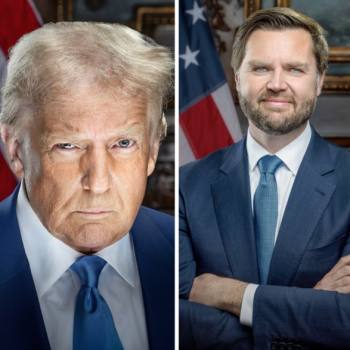I recently attended an evangelical leadership conference in the Twin Cities on the challenges of multi-cultural church ministry. The strong attendance and energy at this conference symbolized, to me, a rising conviction among many evangelical leaders that the church must learn to intelligently engage an increasingly diverse society and perhaps should even begin to reflect that diversity in its own membership.
Soong-Chan Rah's recent book, Many Colors: Cultural Intelligence for a Changing Church (Moody, 2010), is an important contribution to this development. It's a good, introductory resource for leaders who desire to facilitate hospitable, theologically sound, and gospel-focused communities that embrace difference and otherness for the sake of the kingdom. The alternative -- retreating to or remaining in the comfort of group homogeneity -- will only ensure the decline (which, statistics suggest, has already begun) of the Anglo-American evangelical establishment. As Rah argued in his previous book, The Next Evangelicalism (InterVarsity, 2009), the health of the evangelical church as a whole depends upon a healthy integration with minority and immigrant Christian communities, motivated by humility toward the "other" and by a passion for the kingdom.
Many Colors seems, for the most part, written to Christian leaders who have already embraced the value of diversity and integration and who are currently practicing multi-cultural church ministry. While it's not quite a "how-to" manual (which he acknowledges), it does contain a good bit of practical information for developing cultural intelligence in the church. At root, cultural intelligence, Rah says, involves "proper motivation, spiritual depth, interpersonal skills, and gracious communication"(12).
The book is composed of three parts. In the first, "Understanding Culture," Rah develops a biblical theology of culture grounded on the imago Dei and the missio Dei. He rightly ties creation, fall, and mission together in his argument for the valuing of culture as an instrument of divine revelation. Interacting with Andy Crouch's commendation of "culture-making," Rah suggests that we begin to view culture neither with an "all good" or "all bad" perspective, but as a "sincere, albeit fallen, attempt to reflect God's image through the process of creativity" (29). The missio Dei reorients our understanding of the church as not an end in itself, but as means to toward the eschatological recreation of the world through the emergence of a culturally diverse kingdom.
The strongest components of the book are in parts two and three. In part two, Rah offers practical guidance by spelling out the "multicultural worldview" necessary to discern cultural dynamics, such as power and privilege. In part three, he offers concrete examples for living out a multi-cultural vision, detailing the central roles of story, humility, and hospitality. His theology of culture, however (the burden of part one), suffers from a lack of attention to the critiques often raised against Niebuhr's classic typology of the relation between "Christ and culture." As John Howard Yoder pointed out, in perhaps the most influential critique, "culture" is not, as Niebuhr suggested, a monolith which Christians can either wholly reject, embrace, paradoxically conflict with, or transform. Rah's brief (he only presents two of Niebuhr's five categories, for example) and uncritical use of Niebuhr's typology conflicts with his otherwise more nuanced definition of culture. His explanation of the distinction between cultural relevance and cultural captivity, for example, was much more helpful (72).
I began this review by noting a rising sense of the significance of multi-cultural ministry in a changing society. However, that optimism should be tempered by a recent study, presented in "Race, Diversity, and Membership Duration in Religious Congregations" (Sociological Inquiry), which concluded that 90 percent of U.S. congregations are segregated. The article defined a segregated church as having at least 80 percent representation by a single ethnicity. As a CNN religion blog, reporting on the study, observed: Sunday mornings are still the most segregated times in America.
Given the persistence of segregation in so much of American Christianity today, the impact of Rah's book could have been cemented by the inclusion of a more explicit and extensive theological rationale for cultural diversity and integration within individual churches. In laying out a vision for multi-cultural ministry, Rah refers to the expansion of the covenant to include the Gentiles in Acts and, in a lengthier section, reminds the reader of the deep, tragic history of separatism in American Christianity. The imago Dei and missio Dei were helpful biblical starting points, but much more could have been said, perhaps, to tie together a compelling vision for a many-colored kingdom. A proponent of the homogenous unit principle could embrace Rah's appreciation for the inherent value of culture while arguing that diverse cultures can be admired from a distance. He might protest: Can't we keep our separate Anglo-European, African-American, Hispanic, and Asian churches, while partnering or fellowshipping with each other from time to time? After all, Barnabus and Paul separated, but still worked for the kingdom. Why must we do the harder, messier work of integration?





